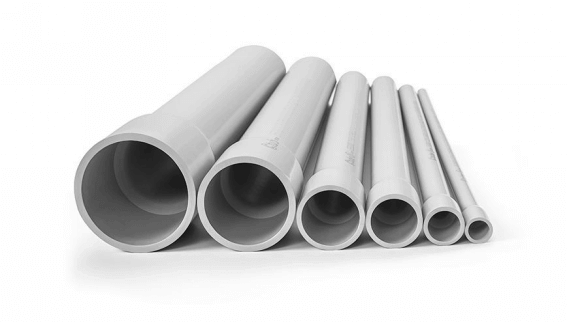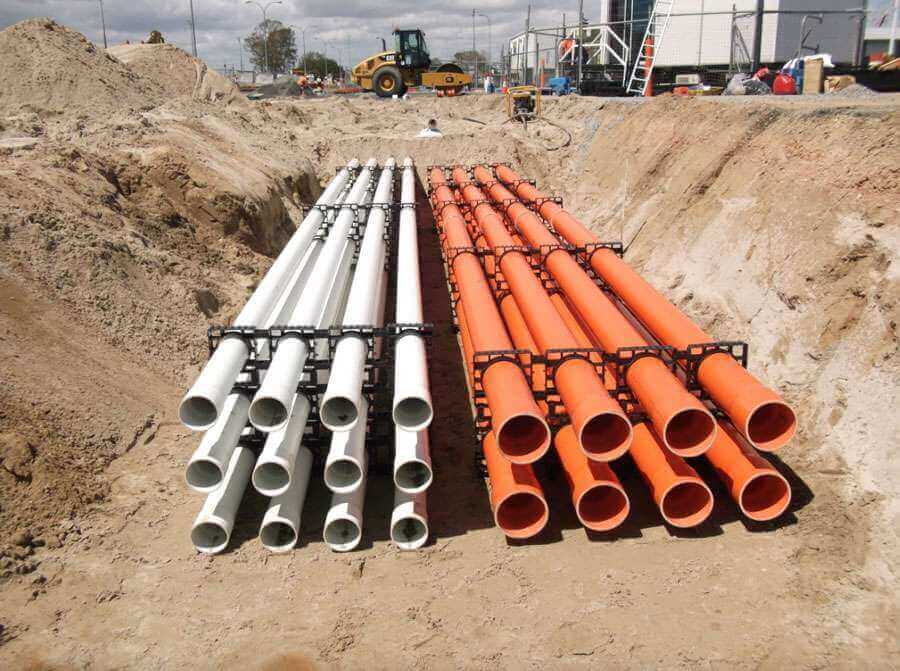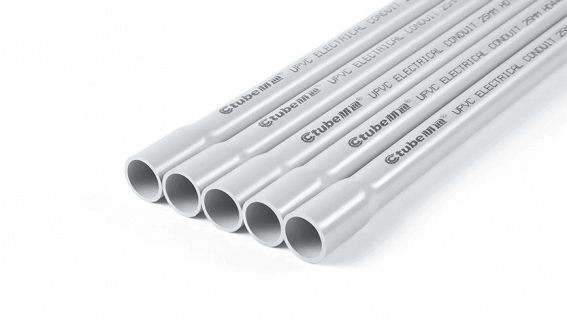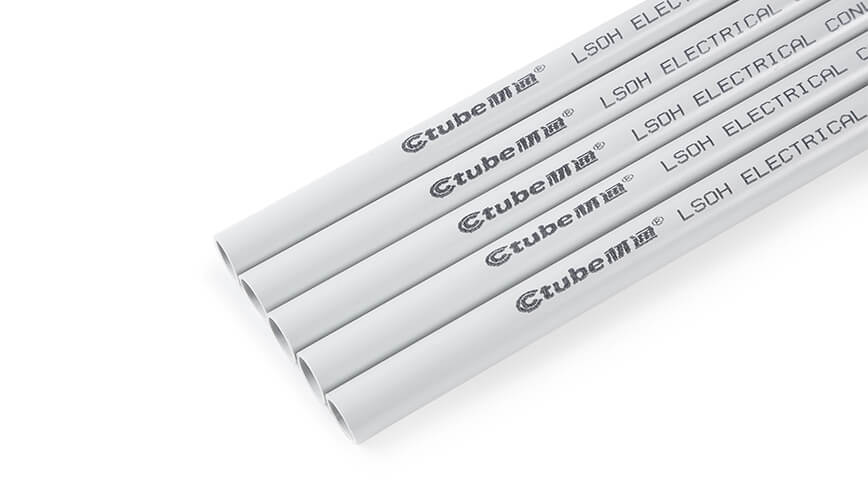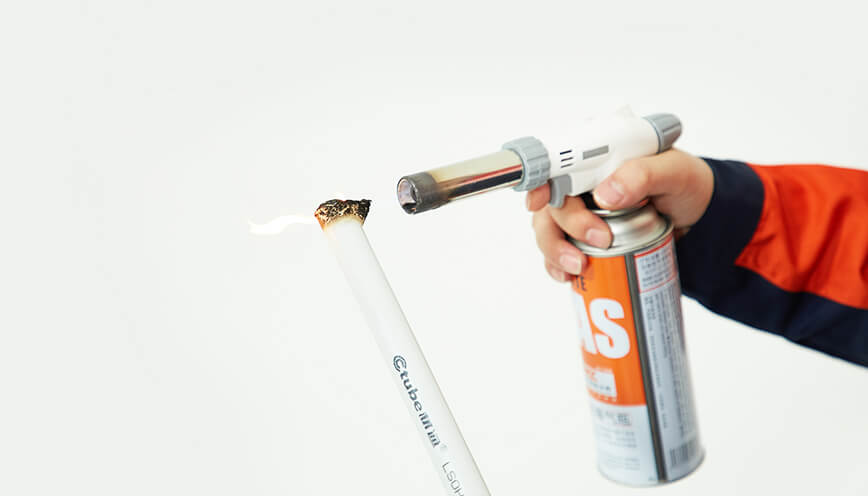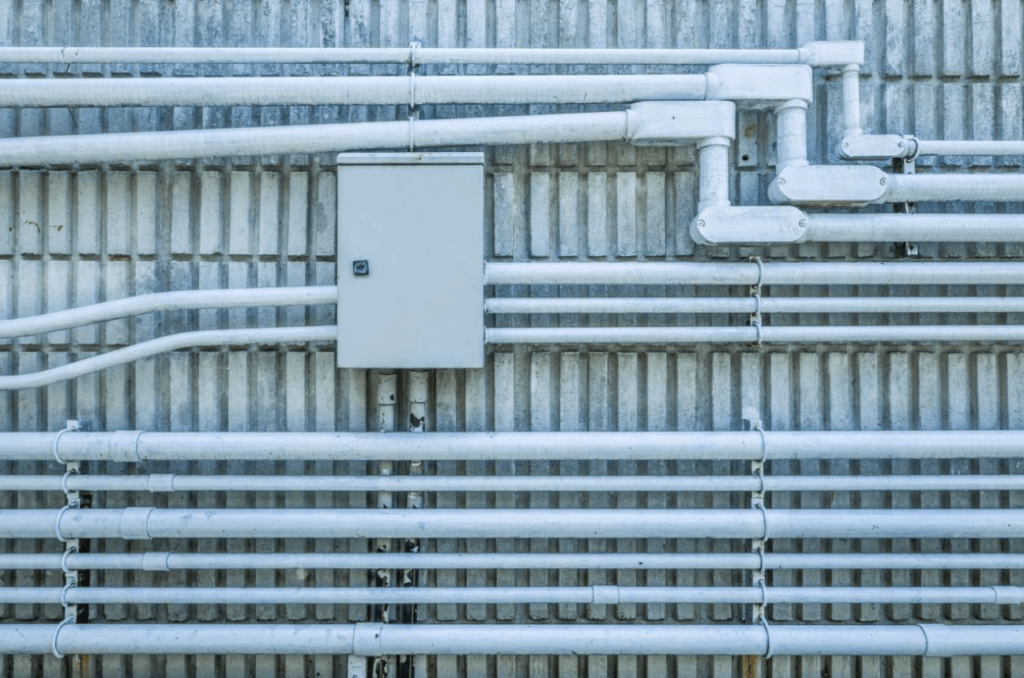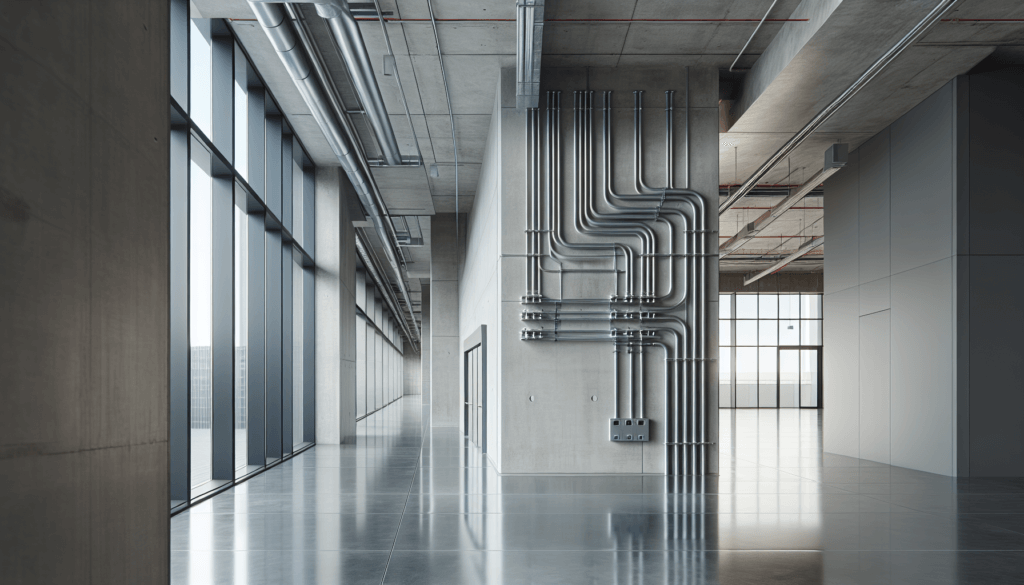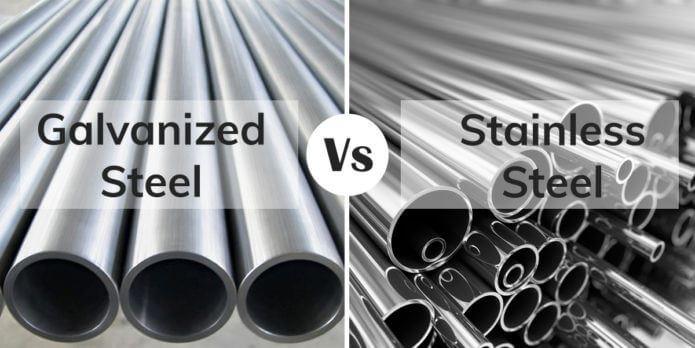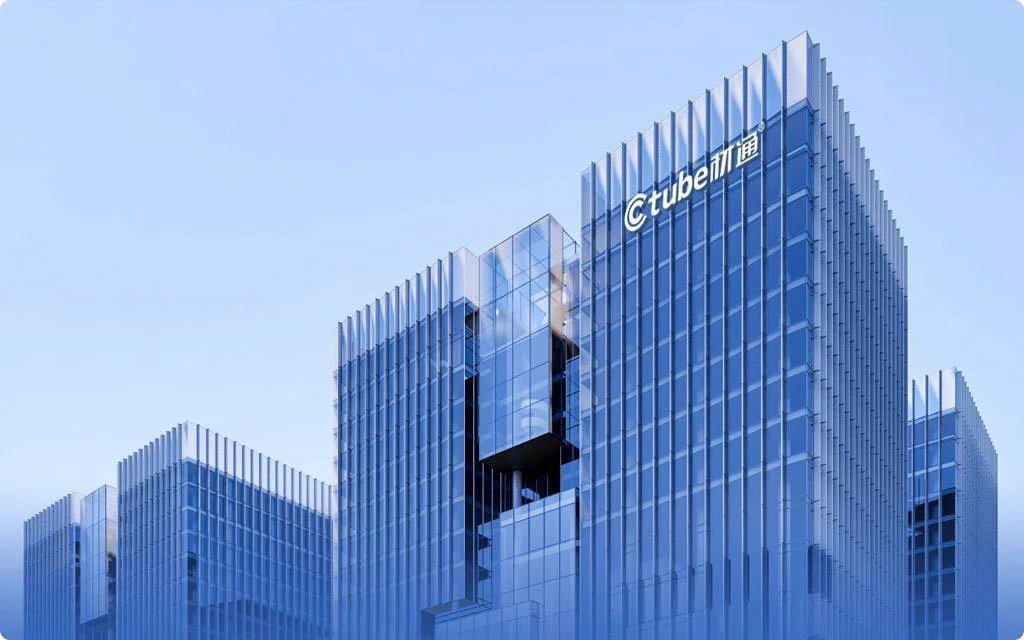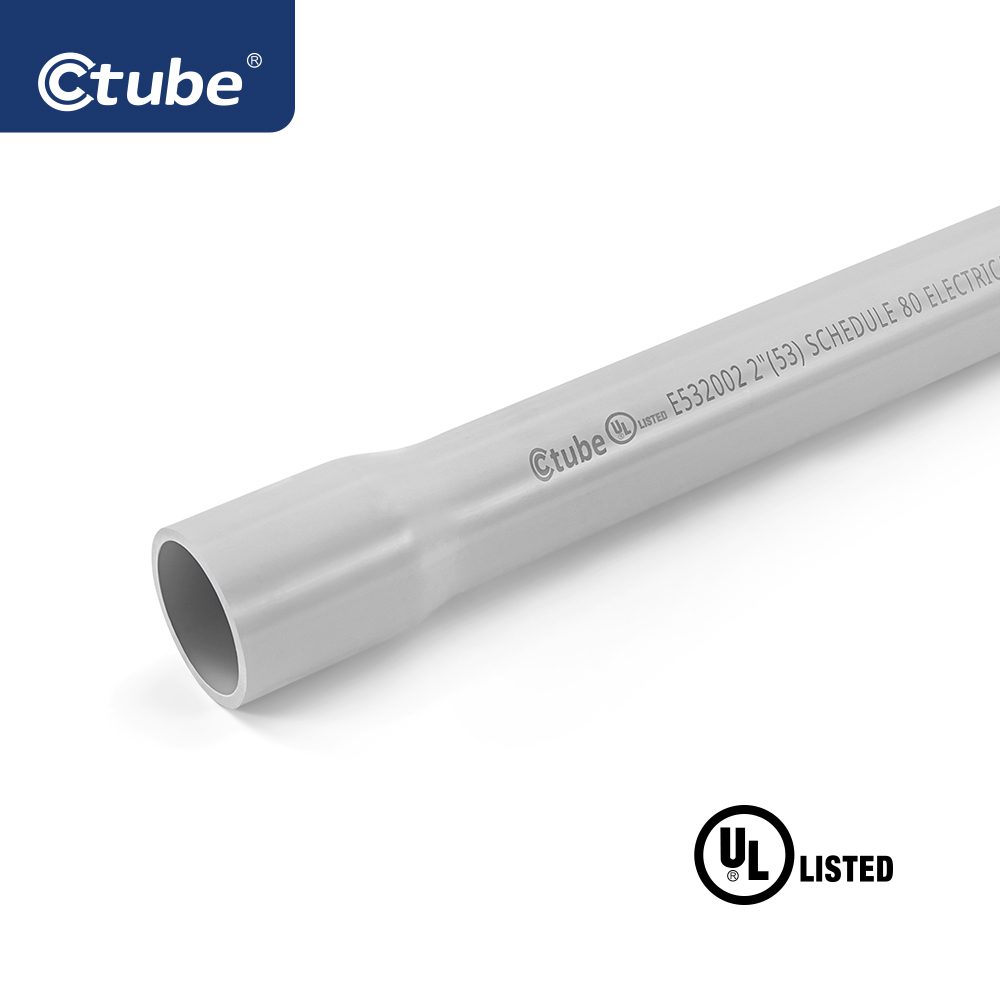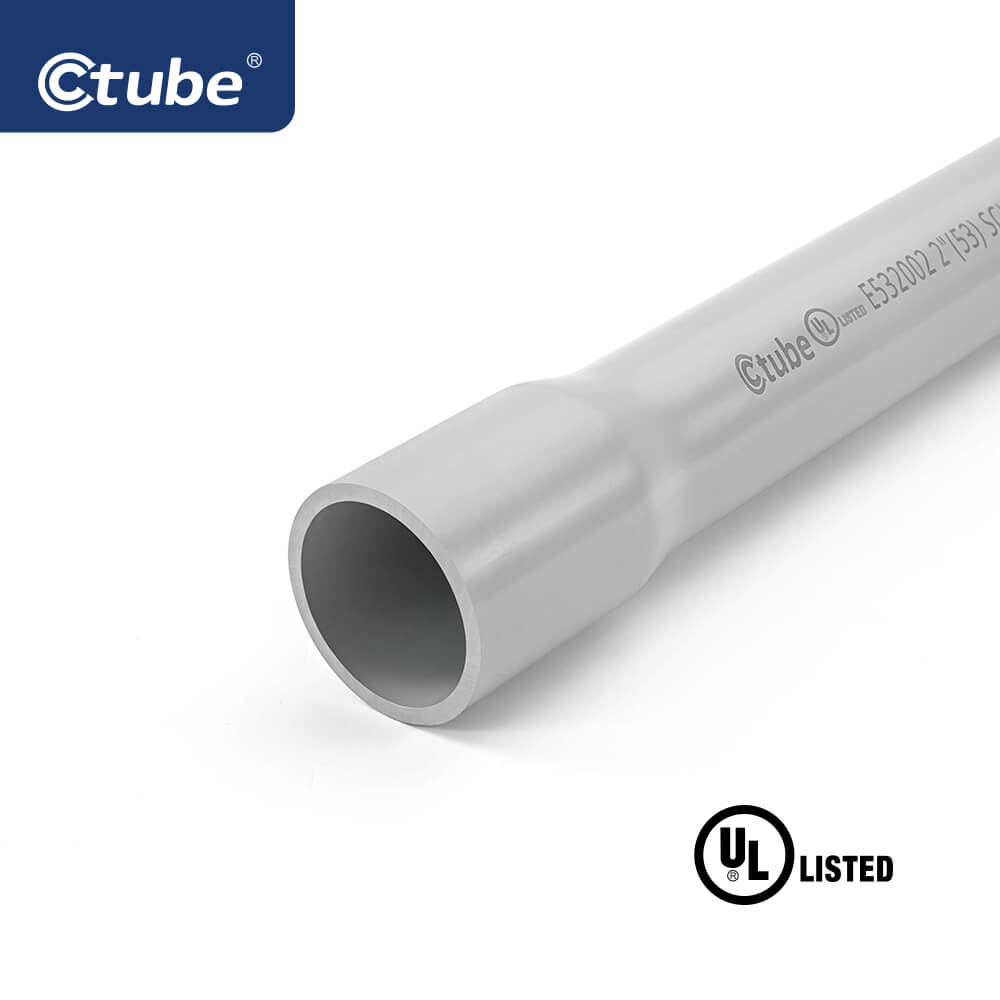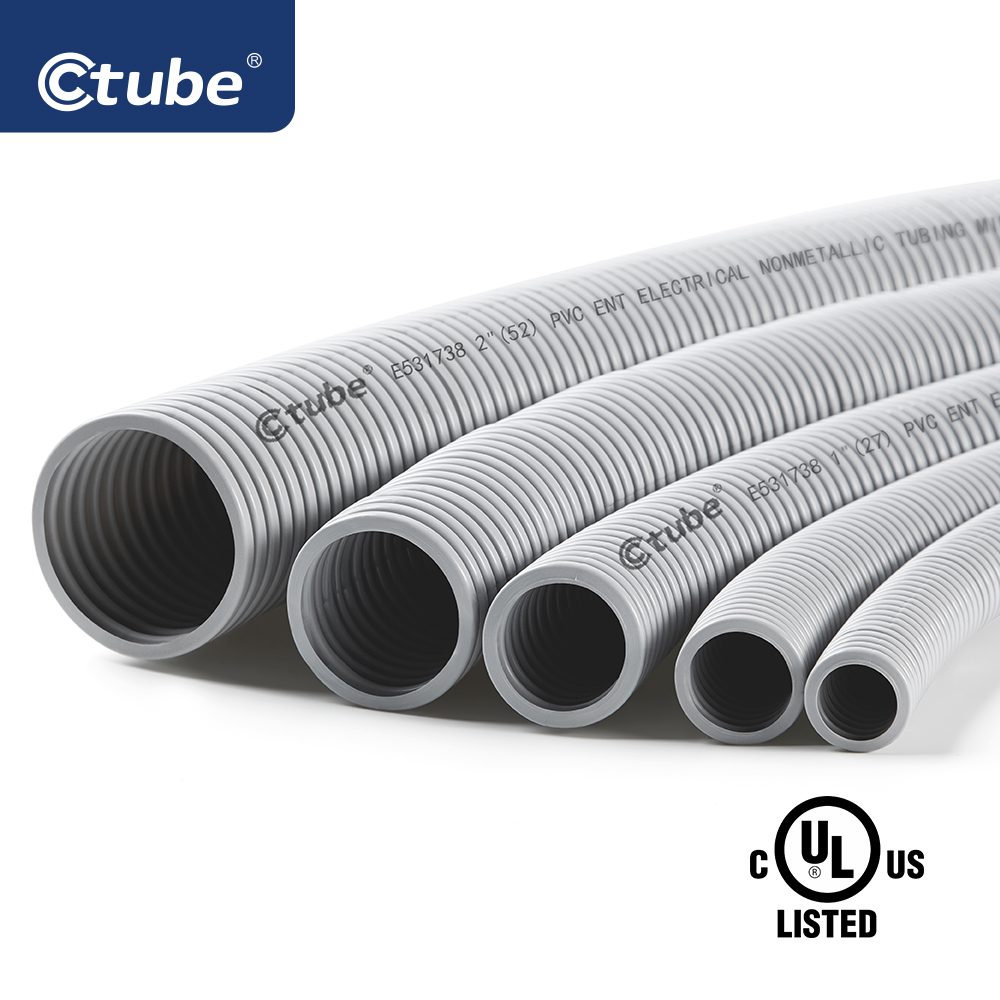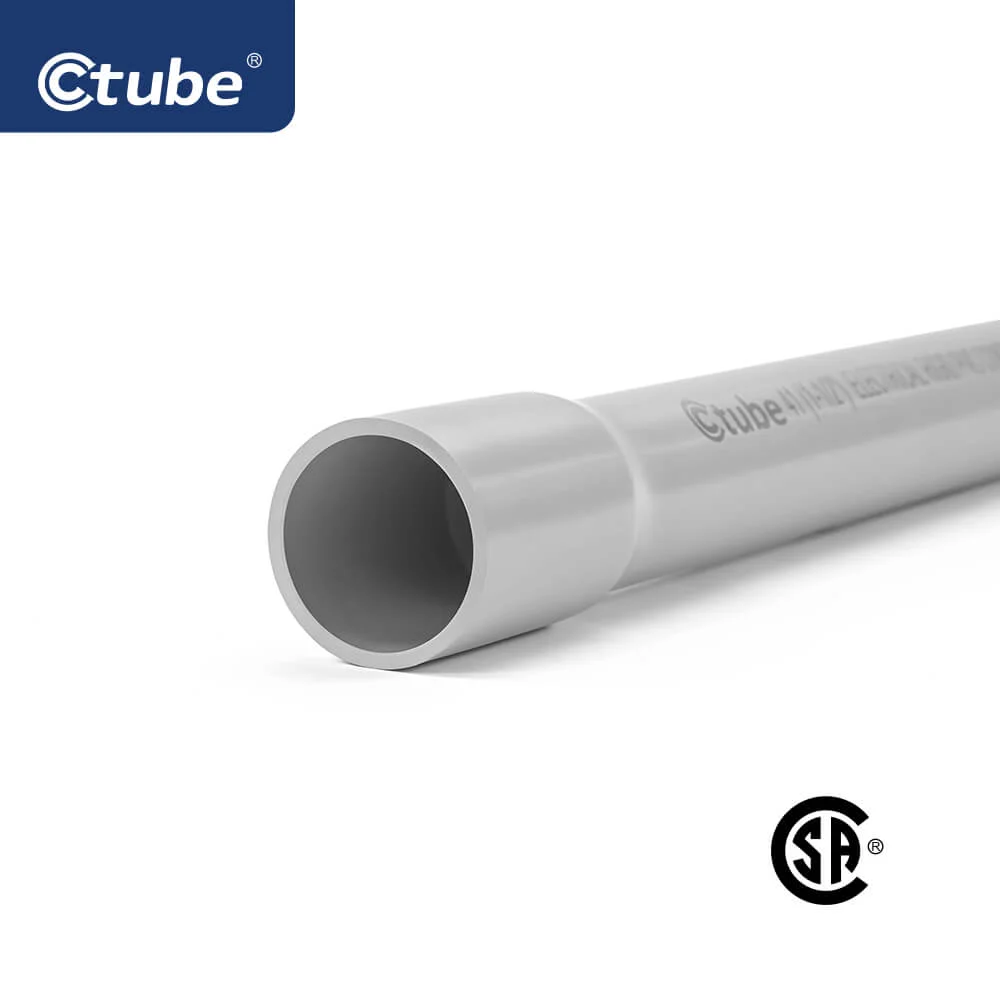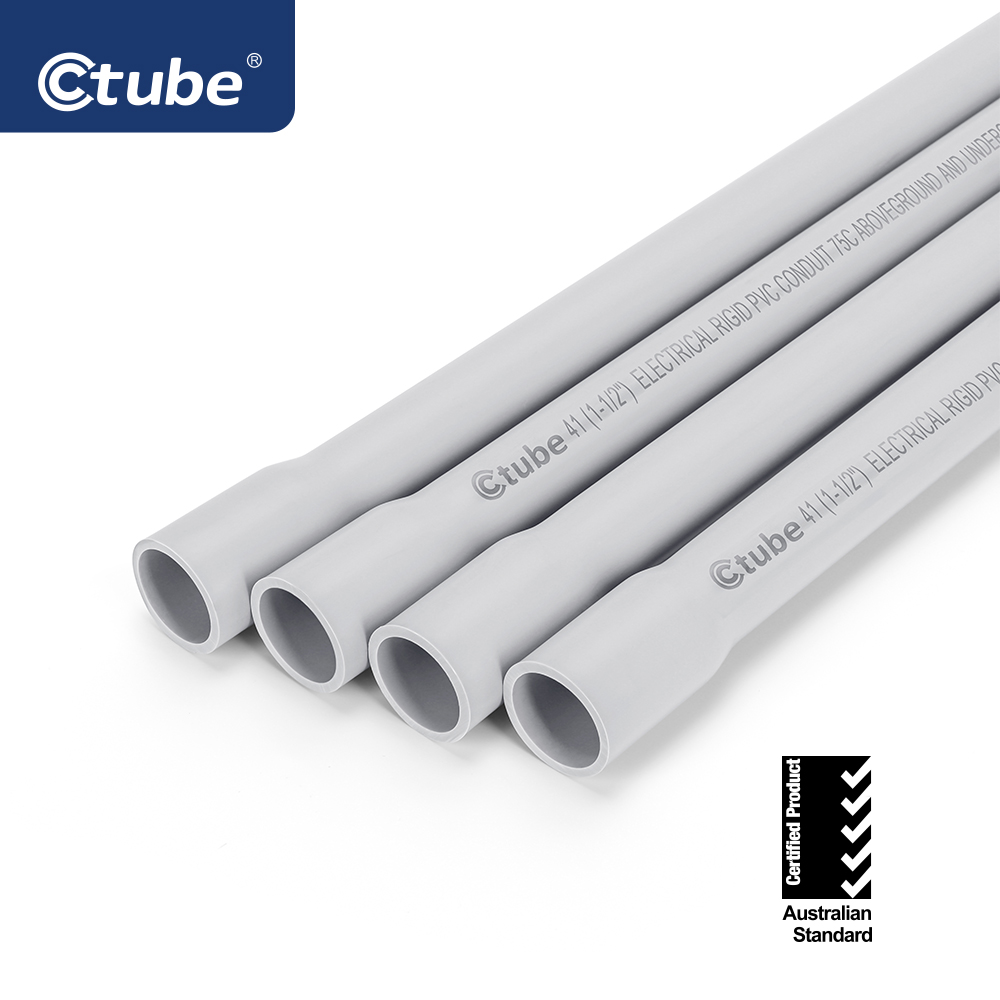Table of Contents
Toggle1. Introduction
One of the most common questions when choosing an electrical conduit is: Which material should I use—PVC, LSZH, or metal? This is a decision that many project managers, electricians, and contractors face when planning an installation. The choice of material can dramatically impact the cost, safety, performance, and long-term durability of the electrical system. But what factors actually determine the best conduit material for your specific project?
Choosing the right conduit material is not a simple decision. There is no one-size-fits-all solution, as different projects have unique requirements, environments, and constraints. The material you choose must align with these factors to ensure both the protection of wiring and the long-term integrity of the installation. The challenge, however, is understanding how various conduit materials—such as PVC, LSZH, and metal—stack up against each other in terms of key attributes like mechanical protection, fire safety, weather resistance, and cost efficiency.
In this post, we will dive into these three popular conduit materials, break down their individual advantages, limitations, and ideal uses, and explore the critical factors that should guide your choice. Hope you can have a clearer understanding of which material best suits your needs, ensuring that you make an informed decision for your electrical project.
2. A Decision Faced by Project Managers, Electricians, and Contractors
When it comes to selecting the right conduit material, project managers, electricians, and contractors each bring their unique perspectives and priorities to the decision-making process. While all are focused on the successful execution of the electrical system, their roles and responsibilities shape how they approach material selection, leading to differences in emphasis on factors like cost, safety, and long-term performance.
2.1 Project Managers: Balancing Budget, Timeline, and Compliance
For project managers, the choice of conduit material is largely driven by a blend of cost-effectiveness, schedule constraints, and compliance with regulations. They are responsible for ensuring that the project stays within budget and meets deadlines, so their focus is often on finding the most economical material that still meets the technical requirements of the project.
They also ensure that the selected material complies with local electrical codes and industry standards, as non-compliance could lead to legal issues or costly rework. Project managers must carefully consider the balance between upfront costs and long-term durability, often making decisions based on budgetary constraints while also considering factors that might affect the project’s overall success, such as material availability or lead times.
2.2 Electricians: Hands-On Installation and Material Handling
For electricians, the selection of conduit material often boils down to practicality and ease of installation. Their primary concern is how easy or difficult it will be to work with a particular material in the field. PVC might be a preferred choice for electricians because of its lightweight nature, making it easier to handle, cut, and install compared to metal conduits.
LSZH might be considered for specific fire-sensitive environments, but electricians may focus on how well it fits into existing systems and its compatibility with other components like fittings, connectors, and junction boxes. Electricians are also very familiar with the tools and techniques needed to work with different materials, and their expertise in installation can influence the choice of material based on which type allows for quicker, safer, and more efficient work on-site.
2.3 Contractors: Managing Multiple Stakeholders and Long-Term Performance
Contractors often have a broader view of the project, working closely with both project managers and electricians. They are focused on ensuring a smooth workflow, managing subcontractors, and maintaining high-quality standards throughout the project. While cost and installation considerations are important, contractors also take a long-term perspective on the durability and maintenance of the conduit system. They may advocate for metal conduits in industrial or high-risk environments where mechanical protection is a priority. Contractors are also tasked with managing supply chains and ensuring that materials are delivered on time, which can influence material choice based on availability or logistics.
In some cases, contractors may need to navigate conflicting priorities between project managers who are focused on budget and electricians who prioritize ease of installation. Their role is to find practical, cost-effective solutions that satisfy both parties while ensuring that the overall electrical system is safe, efficient, and capable of meeting the project’s long-term requirements.
While project managers, electricians, and contractors may have varying priorities when selecting conduit materials, they all share the same ultimate goal: delivering a successful, safe, and efficient electrical installation. The differences in their perspectives can actually complement one another, leading to more well-rounded decision-making.
From the discussion above, it is clear that PVC, LSZH, and metal conduits each have unique characteristics that influence their suitability for different projects. While we have touched on their general advantages and limitations, a deeper understanding of each material is necessary to make an informed decision. In the next chapters, we will explore these materials in greater detail, examining their structural composition, specific advantages in different environments.
3. PVC Conduit: The Versatile Choice for Modern Electrical Systems
3.1 Understanding PVC as an Electrical Conduit Material
3.1.1 What is PVC? Composition and Key Properties
Polyvinyl chloride (PVC) is a synthetic plastic polymer known for its high durability, chemical resistance, and electrical insulation properties. As an electrical conduit material, it offers:
Non-conductive properties, preventing electrical hazards
Resistance to corrosion, moisture, and chemicals, making it ideal for underground conduit systems
Lightweight and flexible structure, reducing installation complexity and labor costs
3.1.2 The Manufacturing Process of PVC Conduit
The production of PVC electrical conduit involves multiple stages to ensure strength, flexibility, and compliance with industry standards:
Polymerization: PVC resin is synthesized through chemical polymerization.
Extrusion Molding: The resin is heated and shaped into rigid conduit tubes.
Additive Enhancement: To improve performance, UV stabilizers, fire retardants, and impact modifiers are added.
Cutting and Quality Testing: The conduit is cut into standard lengths (e.g., 10 feet, 20 feet) and tested for thickness, impact resistance, and fire safety compliance.
3.2 Key Advantages of Using PVC Conduit in Electrical Installations
3.2.1 Corrosion and Chemical Resistance
Unlike metal conduit, PVC is naturally resistant to rust, oxidation, and chemical exposure, making it ideal for environments with high moisture, saltwater exposure, or industrial chemicals. This property ensures long-term durability and minimal maintenance in settings such as water treatment plants, marine installations, and underground conduit networks.
3.2.2 Lightweight and Easy Installation
PVC conduit is significantly lighter than metal alternatives, reducing transportation costs and labor efforts during installation. Electricians and contractors can cut, join, and bend PVC conduit easily, minimizing the need for specialized tools. Its non-conductive properties also eliminate the need for additional grounding, simplifying installation in residential, commercial, and industrial buildings.
3.2.3 Fire Retardancy and Heat Resistance
Traditional PVC conduit was often criticized for low fire resistance, but modern formulations have improved its self-extinguishing properties. High-quality flame-retardant PVC conduit meets industry standards such as UL 94 V-0, ensuring greater safety in electrical installations.
3.2.4 Cost-Effectiveness and Long-Term Value
PVC conduit is one of the most cost-effective electrical raceway solutions, providing lower material costs, reduced labor expenses, and minimal maintenance requirements. Compared to metal conduit, PVC offers a higher return on investment due to its long service life, reduced installation time, and resistance to environmental degradation.
3.2.5 Superior Electrical Insulation
One of the primary reasons PVC conduit is so widely used in electrical installations is its exceptional electrical insulating properties. PVC, being a non-conductive material, effectively prevents accidental electrical shocks or short circuits. This makes it an excellent choice for electrical systems where safety is a critical concern, such as in residential homes, schools, hospitals, and factories. Additionally, PVC conduit prevents the potential for electrical fires caused by poor grounding or external influences.
3.2.6 Customization and Versatility in Applications
PVC conduit is available in a wide range of configurations, sizes, and colors, offering versatility for various applications. It can be customized to meet specific project needs, from thin-walled flexible conduit for tight spaces to more rigid, heavy-duty options for demanding installations. Additionally, PVC conduit is adaptable for specialized uses, with common color coding for different applications—white for electrical communication, orange for heavy-duty electrical installations, and grey for medium-duty applications. These color options help with easy identification, making it particularly useful in complex systems like data centers or factories, where clarity is essential for large-scale projects.
3.3 Challenges of PVC Conduit
While PVC conduit offers many advantages, it also comes with a few limitations that should be considered before making a selection:
Brittleness in Cold Temperatures: PVC can become brittle in extremely cold conditions, which might lead to cracking or damage during installation or operation. This is particularly important for outdoor or unprotected environments in colder climates.
UV Degradation: Although UV-resistant formulations exist, standard PVC can degrade under prolonged exposure to sunlight, leading to color fading and material weakening over time.
3.4 The Evolution of PVC Conduit in Electrical Installations- UPVC Solar conduit
Over the years, PVC conduit has evolved significantly to meet the changing demands of modern electrical systems. Improvements in material composition, fire resistance, and UV protection have enhanced its durability and performance in various environments.
One of the advancements in PVC formulation is the development of UV-resistant conduits, particularly for outdoor and solar applications. Through extensive research and testing, it was discovered that adding titanium dioxide (TiO₂) to the PVC compound significantly enhances its ability to resist ultraviolet (UV) radiation.
With the rapid expansion of solar energy infrastructure, electrical conduit manufacturers introduced UPVC solar conduit, designed specifically for photovoltaic (PV) installations.
4. Introduction to LSZH Conduit: A Safer Alternative to PVC
While PVC conduit is a popular choice for many electrical installations due to its durability, cost-effectiveness, and ease of use, it has one significant drawback: when exposed to high temperatures or in the event of a fire, it releases toxic gases, such as hydrogen chloride (HCl). These gases can pose serious risks to both human health and the environment, especially in confined spaces where proper ventilation may be limited. In buildings, tunnels, and other enclosed environments, the release of toxic smoke can create hazardous conditions, obstruct escape routes, and compromise the safety of emergency responders.
To mitigate these risks, the development of Low Smoke Zero Halogen (LSZH) materials has become a game-changer in the electrical conduit industry. LSZH materials are specifically engineered to address the safety concerns associated with fire and toxic gas emissions, offering a healthier, more environmentally friendly alternative to traditional PVC. Below, we dive deeper into LSZH conduit, explaining its core properties, benefits, and applications that make it an ideal choice in specific electrical installations.
4.1 What is LSZH Material?
LSZH (Low Smoke Zero Halogen) materials are a class of non-toxic, fire-resistant plastics that are designed to emit minimal smoke and zero halogen gases when exposed to high temperatures or flames. In contrast to conventional materials like PVC, which release harmful chlorine gas when burned, LSZH products are formulated with special additives that eliminate halogens, resulting in less harmful smoke and non-toxic by-products during a fire.
LSZH conduits typically consist of polyethylene (PE) or polypropylene (PP) polymers, which are combined with specific flame-retardant compounds that provide self-extinguishing properties while minimizing the risk of fire propagation. These materials also feature superior low smoke characteristics, which means they produce significantly less smoke compared to traditional materials like PVC during combustion. The combination of these properties makes LSZH products particularly well-suited for environments where safety, human health, and environmental considerations are critical.
4.2 Advantages of LSZH Conduit
4.2.1 Enhanced Fire Safety
LSZH conduit’s most significant advantage over PVC is its fire safety performance. When subjected to fire, LSZH materials release little to no smoke and produce no halogenated gases like chlorine or hydrogen chloride. This dramatically reduces the risk of toxic inhalation and corrosive damage to equipment during a fire, making LSZH conduit an essential choice in public spaces, commercial buildings, tunnels, and industrial facilities.
4.2.2 Health and Safety Benefits
The lack of toxic gases such as hydrogen chloride and dioxins from LSZH products means that people in fire-affected areas are at a significantly lower risk of poisoning from smoke inhalation. Additionally, the non-toxic emissions from LSZH products help maintain better air quality in the event of a fire. This is particularly important in public transport systems, airports, and hospitals, where evacuation procedures need to be fast and efficient.
4.2.3 Environmentally Friendly
The environmental impact of LSZH materials is also considerably lower compared to PVC. Halogen-free additives ensure that when LSZH products are exposed to fire, the by-products are less harmful to the environment, particularly in terms of pollution and soil contamination. Since they do not release toxic halogen gases, they contribute to a healthier environment and less overall environmental degradation in the case of a fire.
4.2.4 Superior Performance in Extreme Conditions
LSZH conduits are designed to handle extreme conditions such as high temperatures, moisture, and chemical exposure. Like PVC, LSZH conduits are resistant to corrosion, but they also perform better in high-temperature environments due to their fire-resistant properties.
4.3 Applications of LSZH Conduit
4.3.1 Public and Commercial Buildings
In high-occupancy areas like office buildings, shopping centers, and theaters, LSZH conduit helps to ensure that electrical wiring systems do not contribute to hazardous smoke production in case of fire. This is especially critical in buildings with large numbers of occupants, where fire safety regulations mandate the use of low-smoke, halogen-free materials.
4.3.2 Transport and Tunnels
LSZH conduit is commonly used in tunnel installations, including subway systems, underground highways, and rail networks. These spaces often face high fire risks, and the use of LSZH conduit reduces the potential harm caused by toxic fumes and smoke, making evacuations and emergency responses safer and more effective.
4.3.3 Hospitals and Healthcare Facilities
In hospitals, where fire safety is of the utmost importance, LSZH conduit is ideal for wiring systems in critical care areas like operating rooms, intensive care units (ICUs), and patient rooms. LSZH conduits help prevent the release of harmful gases that could jeopardize the health of patients, particularly those with respiratory conditions.
5. The Role of Metallic Conduits in Electrical Systems
While LSZH conduits offer distinct advantages in terms of fire safety and healthier environments, they come at a higher cost, which may not always be feasible depending on the project budget. Metallic conduits, on the other hand, offer their own set of benefits and may provide a practical solution in situations where cost-effectiveness and mechanical protection are more critical. Although they may lack the low-smoke, halogen-free properties of LSZH, metallic materials can still deliver robust performance and fire resistance in a variety of electrical installations.
With that, we now turn our focus to metallic conduits—an essential material used across numerous applications, offering high-durability. In this section, we will delve into the key types of metallic conduit materials, such as steel, aluminum, and stainless steel, examining their distinct advantages, applications, and limitations.
Understanding these characteristics will help you determine whether metal conduits are the right choice for your particular electrical project, based on factors like environmental conditions, safety requirements, and cost considerations.
5.1 The Categorization of Metal Electrical Conduits: Understanding Different Benchmarks
Metal electrical conduits are categorized in various ways based on factors such as strength, material composition, and intended use. The classification can differ depending on the specific criteria or benchmark applied, meaning that the same conduit type may be categorized differently.
5.1.1 Mechanical Strength
One common benchmark for categorizing metal conduits is based on wall thickness and strength. For example, Rigid Metal Conduit (RMC), Intermediate Metal Conduit (IMC), and Electrical Metallic Tubing (EMT) are all considered metal conduits, but they vary in terms of wall thickness and the level of protection they provide.
RMC is classified as the thickest and most robust, designed for high-impact environments, whereas EMT, with its thinner walls, offers lighter protection suited for less demanding conditions.
FMC and LFMC are classified differently because of their flexibility and protective coatings, making them ideal for areas where movement or moisture protection is necessary.
5.1.2 Material Composition
Another benchmark used in categorization is the material composition. Metal conduits, which we mentioned above such as RMC and IMC and so on, are commonly made from materials such as galvanized steel, aluminum, or even stainless steel. These materials influence the conduit’s ability to resist corrosion, handle environmental conditions, and its overall weight. For example, aluminum conduit is often categorized separately from steel due to its corrosion resistance and lightweight properties, making it an ideal choice for coastal or outdoor installations.
5.1.3 Outdoor or Indoor Usage
A third categorization benchmark is based on intended application. Depending on the environment and the specific needs of the installation, metal conduits may be classified as either indoor or outdoor solutions. Conduits designed for outdoor or harsh environments, such as LFMC or RMC, often feature additional protective coatings, such as weather-resistant jackets, to ensure long-term performance. Meanwhile, metal conduits intended for indoor use, like EMT, are categorized for lighter-duty applications and ease of installation in controlled environments.
5.2 Key Advantages of Metal Conduits: Strength, Safety, and Long-Term Reliability
Metal conduits offer a range of benefits that make them a preferred choice in many electrical installations. Their strength, fire resistance, and ability to shield against electromagnetic interference provide significant advantages over non-metallic alternatives.
5.2.1 Superior Mechanical Strength and Durability
Metal conduits are known for their exceptional mechanical strength, making them highly resistant to impact, crushing, and external damage. This makes them an ideal choice for industrial environments, high-traffic areas, and outdoor applications, where electrical installations must withstand physical stress. Unlike PVC conduits, which can become brittle over time, metal conduits maintain their structural integrity, ensuring long-term durability.
5.2.2 Fire Resistance for Enhanced Safety
Unlike plastic conduits, which can burn, melt, or emit toxic fumes in high temperatures, metal conduits provide superior fire resistance. In the event of a fire, metal conduits do not combust or contribute to flame spread, helping to contain electrical faults and prevent fire-related disasters.
5.2.3 Electromagnetic Interference (EMI) Shielding
Metal conduits offer natural protection against electromagnetic interference (EMI), which is a critical advantage in electrical systems involving sensitive electronic equipment. Unlike PVC or LSZH conduits, which offer no EMI shielding, metal conduits prevent external electromagnetic fields from disrupting electrical signals. This is particularly valuable in hospitals, data centers, and communication networks, where stable and interference-free electrical performance is essential.
5.2.4 Built-in Electrical Grounding Capabilities
Unlike non-metallic conduits, which require a separate grounding conductor, metal conduits can serve as an effective grounding path, enhancing electrical safety. This built-in grounding capability helps to direct fault currents safely to the ground, reducing the risk of electrical shock and equipment damage. In industrial and commercial settings, where grounding is essential for worker safety and system reliability, metal conduits provide a significant advantage over plastic alternatives.
5.3 Corrosion Resistance Solutions in Metal Electrical Conduits
While metal electrical conduits offer superior strength and durability, one common concern among users is their susceptibility to corrosion and rust. Unlike PVC or LSZH alternatives, metal is naturally prone to oxidation, especially in humid or chemically reactive environments. However, advancements in material engineering and protective coatings have significantly extended the lifespan of metal conduits, making them a reliable choice even in challenging conditions.
By selecting the appropriate type of metal and utilizing specialized treatments, such as galvanization or stainless steel alloys, the risk of corrosion can be effectively minimized.
5.3.1 Galvanized Conduit: Enhanced Protection Against Corrosion
One of the key reasons for choosing galvanization over other methods is the self-healing property of zinc. If the galvanized layer is scratched or damaged, zinc reacts with oxygen and water to form zinc oxide and zinc carbonate, which naturally “seals” the exposed steel and prevents further rusting. This is a major advantage over painted or coated metals, which can corrode once the protective layer is broken.
Galvanized conduit is one of the most widely used methods to enhance the corrosion resistance of metal electrical conduits. The process of galvanization involves coating the steel or other material with a layer of zinc, which serves as a barrier against moisture, salt, and other corrosive elements. The zinc coating prevents the metal conduit from rusting, even in harsh environmental conditions, making galvanized conduits ideal for outdoor, underground, and high-humidity environments.
While stainless steel and aluminum are also corrosion-resistant materials, they come with higher costs. Stainless steel offers excellent protection but is significantly more expensive to manufacture, transport, and install. Galvanized ways provides a similar level of protection at a much lower cost, making it the ideal choice for large-scale projects without compromising performance.
5.3.2 Stainless Steel Conduit: Superior Corrosion Resistance for Extreme Conditions
For applications in environments where even galvanized conduit may not provide adequate protection, stainless steel conduits offer the highest level of corrosion resistance. Stainless steel is a metal alloy composed of iron, carbon, and chromium, with the chromium content forming a protective oxide layer on the surface. This layer prevents the steel from corroding, even when exposed to moisture, salt, or harsh chemicals.
Stainless steel is particularly beneficial in highly corrosive environments such as marine and chemical processing plants. Although it can be more expensive than galvanized conduit, its superior durability and ability to withstand extreme corrosion make it a valuable investment for applications where corrosion resistance is critical. Stainless steel conduits provide long-lasting protection, ensuring the safety and reliability of electrical systems in even the harshest conditions.
5.3.3 Composite Conduit: Combining the Strength of Metal with Non-Metallic Protection
In addition to traditional metal options, composite conduits have emerged as an innovative solution for addressing corrosion concerns. These conduits feature a metal inner liner that provides strength and mechanical protection, combined with an outer layer made from non-metallic materials like PVC or polyethylene. The non-metallic outer shell enhances the conduit’s resistance to corrosion, moisture, and UV exposure, while the metal liner offers protection against physical impact and mechanical damage.
Composite conduits are highly flexible and corrosion-resistant, making them ideal for outdoor, underground, and chemical-intensive environments. The combination of metal and non-metallic materials makes them particularly effective in moisture-prone areas, coastal regions, or locations with exposure to harsh chemicals. These conduits provide an excellent balance of strength, flexibility, and long-term durability.
6. Conclusion: Selecting the Right Metal Conduit for Your Project
PVC conduits are suitable for less demanding environments and budget-conscious projects. LSZH conduits are ideal where fire safety and environmental concerns are paramount, though they come at a higher price. Metal conduits provide the best mechanical protection and long-term durability, particularly in harsh or high-risk environments, but their higher cost may make them less feasible for some projects.
There is no one-size-fits-all material. The key takeaway is that the most suitable material is often not the cheapest or the best in isolation but the one that offers the best overall value for the specific project.The choice between PVC, LSZH, and metal conduits should be based on a thorough understanding of the project’s requirements. Cost considerations play a major role, but other factors such as environmental conditions, safety standards, fire resistance, and mechanical protection must also be taken into account.
At Ctube, we understand that choosing the right conduit material can be a complex decision. Our team is here to assist you in selecting the best conduit for your specific needs. If you’re working on a project or if you’re looking for high-quality conduits at competitive prices, don’t hesitate to contact us today. We offer a wide range of PVC, LSZH, and UPVC solar conduits, all designed to meet the highest standards of quality and performance.
Hope this post helpful, thank you for your reading. Good luck with your projects!
FAQs
1. Can metal conduits be bent?
Yes, some metal conduits, like EMT (Electrical Metallic Tubing), can be bent. However, rigid metal conduit (RMC) is more difficult to bend and requires special tools.
2. What are the most common types of conduit fittings?
The most common types include elbows, couplings, connectors, bushings, and nipples. Each serves a unique purpose in joining or directing the conduit system.
3. How do I ensure that conduit fittings are properly sealed?
To ensure a proper seal, make sure to use the right type of fitting for the conduit material, apply appropriate adhesive or thread sealant when required, and tighten fittings securely to prevent leaks or disconnections.



